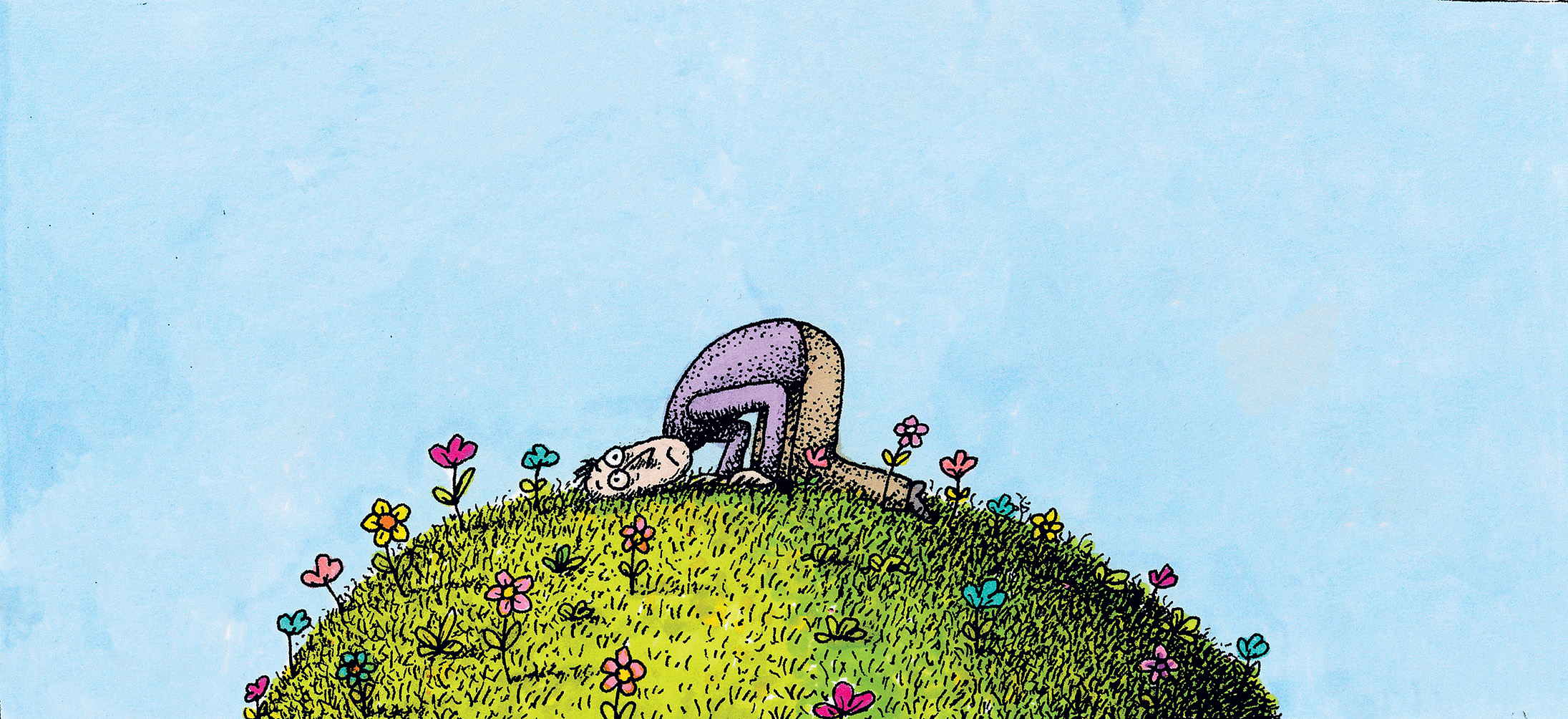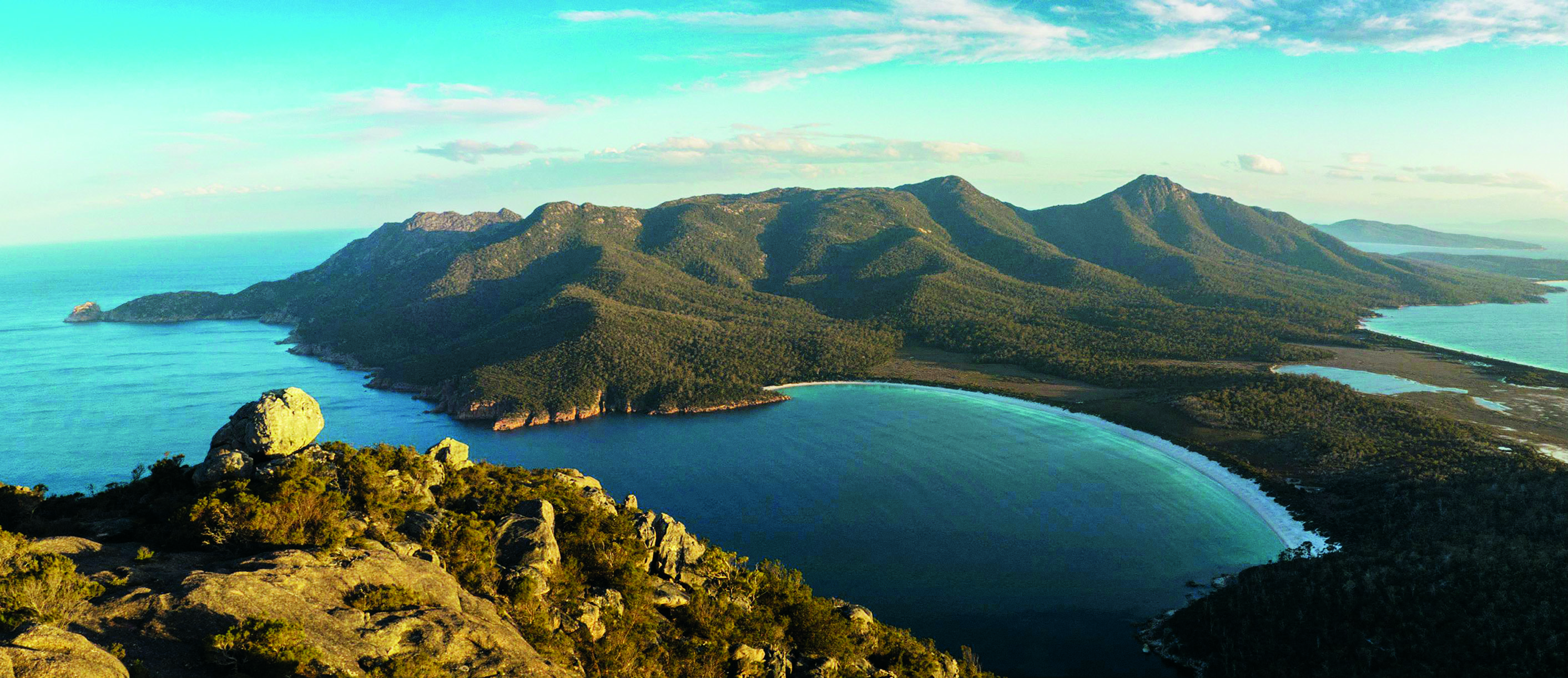
Today, humanity shivers at the thought of the climate warming by a few degrees Celsius. Yet all you really need is an eruption of a supervolcano to reduce the average temperature on Earth by more than 10 degrees. This has already happened before, but the memory of the event died (along with most of the inhabitants of the planet at the time).
The fear of volcanoes still rattles somewhere in the outer limits of the collective memory of the Homo sapiens species. But unlike hunger, great plagues, floods or earthquakes, people haven’t had much to do with volcano eruptions; nevertheless catastrophes caused by them have always been immediately associated with the end of the world.
“And I saw a star fall from heaven unto the earth: and to him was given the key of the bottomless pit. And he opened the bottomless pit; and there arose a smoke out of the pit, as the smoke of a great furnace; and the sun and the air were darkened by reason of the smoke of the pit.” These words, written in the Apocalypse of St. John, consider the eruption of a volcano to be one of the plagues that will destroy humanity at the end of days. What is rather striking though is that conclusions drawn from the past suggest that in this particular case, the biblical prediction could one day prove to be exceptionally prophetic indeed.
The murderous Toba…
The eruption of the Toba supervolcano in Sumatra around 73,000 years ago gave our world a foretaste of the apocalypse (Earth hadn’t experienced a greater eruption for several million years). It most likely looked like this: first a column of fire, smoke, rocks and ashes blasted up into the air to a height of about 50 kilometres, reaching beyond the Earth’s stratosphere. The landmasses nearby shook to their foundations, while the blast of the eruption may have reached the region of the Persian Gulf, 5000 kilometres away. Following right in its footsteps was death, carried by volcanic gases racing at a speed of 400km/h. These gases were not only toxic, they were also scorching hot, reaching a temperature of 800°C.
In the long-term, the ash proved to be even more fatal, as it slowly fell from the stratosphere onto the masses of land. Even a layer two milimetres thick can kill all vegetation and poison the water. Meanwhile, a layer of ash half-a-metre or more thick shrouded the ground within a perimeter of nearly 500 kilometres around Toba. Yet the radius within which the plume killed vegetation had to be several times greater. “Toba’s ashes have been identified in the sea depths in many places, in regions as far as the Arabian Sea, located 4000 kilometres away from the eruption,” notes volcanologist Clive Oppenheimer in his book, Eruptions that Shook the World.
In places that the ash didn’t reach, the act of destruction was completed by the volcanic winter. The masses of sulphur that Toba threw into the atmosphere reacted with the air to create 10 billion tonnes of sulphuric acid. Droplets of the acid floated in the stratosphere, effectively reflecting the rays of the sun. According to assessments made by climatologists, Toba treated the Earth to a drop in average global temperature of over 10°C! Five long years had to pass before things started to gradually heat up again. But the climate had drastically changed by then: the dense rainforests disappeared for the most part, giving way to large grassy terrains.
…thanks to which we suffer to this day
A report published two years ago by the World Meteorological Organization shows that over the last 200 years, the average temperature at the surface of the Earth has increased by 1.1°C. Climatologists claim that even this change must bring about weather abnormalities with catastrophic consequences. Meanwhile, the eruption of Toba meant a change in average temperature on the globe a dozen times bigger, initiating an ice age overnight.
As a result, all large mammals on Earth had nearly been entirely exterminated. The observations made by Oppenheimer were perfectly correlated with the determinations of teams of archaeologists from the University of Illinois and Cambridge University, who conducted research in India and Indonesia under the direction of Stanley H. Ambrose and Michael Petraglia. Traces of volcanic ash, along with organic remains, left no doubt that Toba was to blame. The force of the supervolcano’s eruption was estimated to be approximately one gigaton.
The mightiest hydrogen bomb ever detonated was the Soviet ‘Tsar’. Dropped over the Arctic Ocean in October 1961, the explosive with a load of around 58 megatons caused a seismic wave that circled the Earth three times. The eruption of Toba had a force of 20 such hydrogen bombs. So it’s no surprise that according to geneticists, only a handful of people living in Africa, totalling a few thousand but no more than 20,000 of the population of approximately one million humans on Earth, managed to survive the apocalypse.
As a souvenir, the Toba supervolcano left a lake in the crater (the sink hole created after the eruption), which is about 100 kilometres long and 30 kilometres wide. But that’s not all. According to scientists, the low genetic diversity of the Homo sapiens species may be the reason for the susceptibility to cancerous tumours today, as well as the spread of genetic diseases, such as haemophilia or sickle cell anaemia. On the other hand, people inhabiting the African savannah had to learn to hunt collectively to survive. They started to create the first communities in the process. As the climate started to warm, they colonized the lands situated on the edge of the Mediterranean Sea.
Once upon a time, there was the beautiful island of Crete…
Among the first civilizations that came to life then, one of the most mysterious was that created by the inhabitants of Crete. The oldest settlements on the island were built around 5000 years ago. They laid the foundations for the magnificent Minoan culture that would endure for 600 years. According to findings made by archaeologists, their key centres were giant structures erected along the sea coast, referred to by scientists as palaces. Residential houses were concentrated around these structures. A distinctive feature of historic proportions was the lack of any defensive walls. This would indicate that the inhabitants did not wage wars against each other. Yet another particularity was the role of women presented in frescoes. What’s certain is that women celebrated religious rites as priestesses and participated in sports competitions on equal footing with men. The preserved images suggest common gender equality. At the same time, the Cretan fleet ruled in the Mediterranean Sea. As a result, they had subjugated Cyprus, Rhodes and many smaller islands, as well as the Peloponnese and the shores of the Balkan Peninsula. A thousand years later, the Greek historian Thucydides called them the “rulers of the sea” and emphasized that in their heyday, the sailors from Crete dominated all the Mediterranean trade routes.
The myth claiming that each year a contingent of young boys and girls would be sent to Crete where in the labyrinth they would be consumed by the Minotaur (a man with the head of a bull) indicates that the Achaeans were vassals of the dominion of King Minos (that was the name that each subsequent ruler of Crete held). On the other hand, Egypt became Crete’s most serious trade partner. Tombs discovered along the edge of the Nile had drawings depicting messengers from the land of Keftiu, as Crete was called. Dressed in short skirts with a characteristic apron, they would bring valuable objects for the Egyptians. All of sudden, around 1700–1600 BC, such drawings stopped appearing. A civilization having the chance to create an empire along the entire shore of the Mediterranean Sea simply disappeared, after which Crete fell into the hands of the primitive Achaeans, who started the Mycenaean civilization.
…until Thera swept it away
“It’s difficult to explain the peaceful assumption of power on Minoan Crete by the Mycenaeans. Since all other hypotheses contradict archaeological evidence in one way or the other, we have reason to believe that a rather passive relinquishment of power lay in the nature of the Minoans,” wrote Friedrich Matz in The Cambridge Ancient History published in 1962. At the time, the researcher argued that the Minoan civilization collapsed because the Cretans, degenerated by their prosperity, were incapable of defending their country. The theory of the effeminacy of the inhabitants of magnificent palaces gained a large following.
The fact that to be able to conquer the island, the Achaeans had to first cross the sea dominated by the Cretan fleet, was ignored. Much like the theory put forth in the mid-1960s by Greek archaeologist Spyridon Marinatos, who was leading an excavation on the Cyclades islands in the Aegean Sea. Marinatos was investigating Akrotiri, a village buried under volcanic ash on the island of Santorini, which was called Thira or Thera in ancient times. The eruption of the volcano that destroyed Akrotiri and the disappearance of the Minoan civilization occurred at about the same time. The archaeologist put the two facts together and proposed the hypothesis that the ancient inhabitants of Crete were killed by a volcanic eruption.
The theory was long considered to be phantasmagorical, yet further discoveries confirmed it. Volcanologists determined beyond any doubt that the present-day island of Santorini is nothing more than the rim of a giant crater. And anything that the supervolcano threw into the air during the eruption was being found, little by little, in increasingly more distant places. In 2007, the then Secretary General of the Egyptian Supreme Council of Antiquities, Zahi Hawass, stated that ash and lava from the volcano on Thera had been found during excavation work at Fort Tharo, located on the Sinai Peninsula, 1100 kilometres away from Santorini.
The pieces of the puzzle were gradually beginning to fit, and it became easier and easier to imagine the day on which the exceptional civilization had died. That day probably occurred between 1627 and 1600 BC, when the inhabitants of Crete saw a column of smoke and fire rising from Thera, which was 120 kilometres away. The volcanic mountain situated in the middle of the island at an altitude of over 2000m quite simply blasted off into space along with a larger part of the land, leaving behind a crater with a perimeter of around 35 kilometres. A moment later, people were deafened by a violent roar of over 180 decibels. The ground shook at its foundations, and Crete was hit by a wall of volcanic gas hurtling at a speed of several hundred kilometres an hour. People were killed both by the poisonous fumes and the scorching air. A quarter of an hour later, a tsunami reached the island. A wave 50 metres high stormed its way inland. The annihilation was sealed by rocks falling from the sky. Then the slowly falling ash dealt the final blow to any remaining vegetation. It’s hard to say if anybody survived the calamity, which was more devastating than the explosion of the ‘Tsar’ bomb. A handful of people could have possibly made it. In Histories, Herodotus wrote that the Cretans left their country at the order of the gods and settled near Iapygia (present-day southern Italy), establishing the city of Hyria there. “As the inhabitants of Praesus say, men of various nations flocked to Crete, destitute as it now was of inhabitants; but none came in such numbers as the Hellenes,” the historian claimed.
A thousand years had passed before the Greek, Etruscans and Romans managed to build cities on a similar level of civilization as the Minoan culture. All that was left of the annihilated civilization were legends. When Plato arrived in Egypt in 390 BC, he surely must have heard one of them. The local priests told him about the wonderful island of Atlantis, which was destroyed by a calamity reminiscent of the end of the world.
The witness of the destruction of Pompeii
“A cloud, from which mountain was uncertain, at this distance (but it was found afterwards to come from Mount Vesuvius), was ascending, the appearance of which I cannot give you a more exact description of than by likening it to that of a pine tree, for it shot up to a great height in the form of a very tall trunk, which spread itself out at the top into a sort of branches; occasioned, I imagine, either by a sudden gust of air that impelled it, the force of which decreased as it advanced upwards, or the cloud itself being pressed back again by its own weight, expanded in the manner I have mentioned,” is what Pliny the Younger wrote to his friend in a letter. As a 17-year-old, the future lawyer and writer observed the eruption of Mount Vesuvius from the town of Misenum, 30 kilometres from Pompeii. “We had scarcely sat down when night came upon us, not such as we have when the sky is cloudy, or when there is no moon, but that of a room when it is shut up, and all the lights put out. We were obliged every now and then to stand up to shake off, otherwise we should have been crushed and buried in the heap,” he recalled. People protected themselves from the pumice falling from the sky by tying pillows to their heads. The boy’s uncle, Pliny the Elder, tried to organize a crew that would sail out on a ship to help the people from the settlements situated on the slopes of Mount Vesuvius. “They thought proper to go farther down upon the shore to see if they might safely put out to sea, but found the waves still running extremely high, and boisterous. There my uncle, laying himself down upon a sail cloth, which was spread for him, called twice for some cold water, which he drank, when immediately the flames, preceded by a strong whiff of sulphur, dispersed the rest of the party, and obliged him to rise. He raised himself up with the assistance of two of his servants, and instantly fell down dead; suffocated.” The boy described the death of his uncle, who suffocated by poisonous gas, as seeming to be “looking more like a man asleep than dead.” 20,000 inhabitants of Pompeii ‘fell asleep’ in the same manner beneath the volcanic ash. People were killed by all that Mount Vesuvius spewed out, yet it also perfectly preserved the wealthy city, with its buildings, theatres, sports arenas, baths and brothels.
But Pliny the Younger should have considered the day of the catastrophe, which according to the latest research fell 1940 years ago on 24th August, as one of the luckiest in his life. The eruption of Mount Vesuvius turned out to be a relatively minor calamity. The volcano that destroyed Pompeii and Herculaneum threw out a mere five cubic kilometres of magma and ash into the air. Supervolcano Toba, on the other hand, blew 3000 cubic kilometres of magma alone into the stratosphere, and added 5000 cubic kilometres of ash – 1600 times more!
Therefore, the calamity had a rather local effect, but it made an enormous impression on the entire ancient world. Particularly noteworthy here is the fact that it was in no way associated with the actions of Vulcan, the god of fire, whose forge, according to mythology, was located inside the Mount Etna volcano on Sicily. The rational Romans considered the eruption to be a purely natural phenomenon. Not the Christians, though. The first generations of those faithful to the new religion were anticipating an imminent end of the world. The prophecy contained in the Book of Apocalypse added to the New Testament strengthened their conviction. Human annihilation was to be accompanied by horrific calamities: earthquakes, falling stars and the eruption of a volcano.
According to Origen, a scholar who studied the holy scriptures, the author of this terrifying vision was St. John the Evangelist, who had been exiled to the island of Patmos during the rule of Emperor Nero. It’s hard to say if he was there when the eruption of Mount Vesuvius occurred, but he wrote his work when news of the destruction of Pompeii was the talk of the Empire. And it was indeed the vision of one of the 12 apostles of Christ that would shape the image of the end of the world for the next 2000 years.
Tambora and others
For the last few millennia, volcanoes haven’t really been that bothersome to humanity, although around 850 of them are active, of which nearly half are hidden at the bottom of oceans or seas. The fact that the greatest concentration of volcanoes is located far away from the key centres of civilization, in Indonesia, is quite significant here. Once in a while, they do remind us of their existence with a display of power. One such demonstration was made by the Tambora volcano on the Indonesian island of Sumbawa on 10th April 1815. Its awakening brought the mightiest eruption since the times of Thera. Tambora directly killed around 11,000 people, while its ashes lowered temperatures in an event referred to as the “Year Without a Summer”. The lack of sun and constant rain or snow triggered harvest failures in North America and Europe. Local famine cost the lives of hundreds of thousands of people. However, this fact didn’t particularly shake up the world at that time. The Old Continent was just picking up the pieces after the carnage brought by the years of the Napoleonic Wars. Its inhabitants were therefore quite used to catastrophes, shortages and epidemics. Any hunger revolts that broke out in many European cities were promptly crushed by battle-hardened soldiers. Meanwhile, in the US, multiple increases in the price of corn and oats gave people the motivation to begin mass migration from the East Coast further inland. The conquest of the Wild West began.
Tambora had the most profound impact on the imagination of the elite. Depressed by the constant rain, Lord George Byron started to put his poem “Darkness” onto paper in June 1816, starting with the following words:
“I had a dream, which was not all a dream.
The bright sun was extinguish’d, and the stars
Did wander darkling in the eternal space,
Rayless, and pathless, and the icy earth
Swung blind and blackening in the moonless air…”
After which he added:
“Happy were those who dwelt within the eye
Of the volcanoes, and their mountain-torch.”
His ever-strengthening spleen chased him away to Switzerland. There, he and his companions, writer John Polidori, poet Percy Shelley and his very young wife Mary Shelley, entertained themselves with stories about monsters and ghosts during rest stops in their travels. The play of imagination inspired Mary Shelley to write the novel Frankenstein; or, The Modern Prometheus. The character of the mad scientist bringing a monster to life reflected the spirit of the years to come, much like Edward Munch’s painting The Scream turned out to be a shocking proclamation of the 20th century, which would prove to be horrific for humanity. What’s interesting is that the image of the sky that the Norwegian painter put to the canvas is most likely one that would be observed over Europe for a long time, after the island of Krakatoa was blown to bits around the end of August 1883. The catastrophe occurred once again in faraway Indonesia, on a small island situated between Sumatra and Java. The blast accompanying the island’s annihilation was heard as far away as Diego Garcia, an island 3647 kilometres away. Those living closer experienced first-hand a 40-metre tsunami wave, which killed over 30,000 people.
Fortunately, Krakatao threw six times less ash into the sky than Tambora. Therefore, the global cooling was short-lived, and that’s what constitutes the largest threat for plant vegetation and crop yield at the same time. Therefore, the impressive eruption did not bring about a worldwide catastrophe, much like the spectacular ‘smokescreen’ over the Old Continent caused by the Eyjafjallajökull volcano in Iceland in 2010 didn’t end in calamity either. Its eruption did, however, paralyse air travel throughout the northern hemisphere, giving us a potential feel of how dangerous the eruption of a volcano near large centres would be for modern civilization.
One such example would be the eruption that left a crater 80 kilometres long and 55 kilometres wide in Yellowstone National Park in America. Eruptions of that supervolcano occurred at quite regular intervals every 600,000–700,000 years. The three previous explosions completely covered the western part of North America in lava and ash. The last eruption occurred 640,000 years ago. This fact, and the increasing activity of the nearly 200 geysers at Yellowstone, has led scientists from the United States Geological Survey to predict that the next eruption will occur in about 50,000–60,000 years. But that’s the optimistic version. That’s why pessimists from NASA are already working on ideas of how to contain it if things were to unravel much sooner. They plan to cool down the underground magma reservoir…
Translated by Mark Ordon









